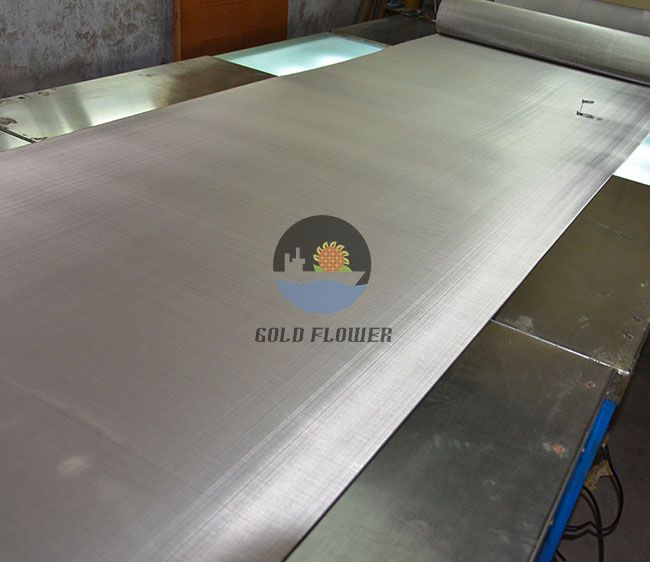okt . 07, 2024 13:50 Back to list
sintered wire
Understanding Sintered Wire Applications and Benefits
Sintered wire represents a fascinating advancement in materials science and engineering, combining the principles of sintering with the utility of welding and weaving techniques. This innovative product is utilized across a variety of applications, ranging from industrial filtration systems to medical devices, emphasizing its versatility and effectiveness in numerous fields. In this article, we will explore the nature of sintered wire, how it is produced, its applications, and the advantages it offers.
What is Sintered Wire?
Sintered wire is produced through a process where metal powders are compacted and heated to a point where particles adhere to each other without completely melting. This method creates a porous, but strong structure that retains the shape and integrity of the wire. The specific parameters of the sintering process—such as temperature, pressure, and duration—can be adjusted to achieve desired characteristics, including porosity, strength, and thermal resistance.
One of the key features of sintered wire is its ability to filter and separate materials at a microscopic level. This property is chiefly because of the controlled porosity inherent to the sintering process. The wire can be tailored to allow specific particle sizes to pass through while blocking others, making it ideal for filtration applications.
Production Methods
The production of sintered wire involves several steps. First, the appropriate metal powder is selected based on the application's requirements. Common materials include stainless steel, bronze, and even specialized alloys. The metal powders are then mixed with a binder for improved cohesion.
Next, the mixture is compacted into wire form, often using extrusion or drawing techniques. Following this, the wire undergoes the sintering process in a controlled environment, where it is heated to enhance particle bonding. The final product is a strong, porous wire that can be processed further, such as cutting or weaving, to create various configurations based on specific needs.
sintered wire

Applications of Sintered Wire
The applications of sintered wire are virtually endless, spanning numerous industries
. Notably, it is widely used in filtration systems, where it effectively collects impurities from gases and liquids. This feature is particularly important in industries such as pharmaceuticals, chemicals, and food and beverage, where cleanliness and safety are paramount.In the automotive sector, sintered wire can be found in exhaust systems and fuel filters, contributing to emissions control and efficiency while also being lightweight compared to traditional materials. Moreover, sintered wire is utilized in the production of prosthetics and medical implants, where biocompatibility and strength are essential. Its porous nature allows for tissue integration, which is crucial for successful medical outcomes.
Advantages of Sintered Wire
The benefits of using sintered wire are pronounced. Firstly, its high strength-to-weight ratio makes it an attractive option for applications where weight savings are critical, such as in aerospace and automotive industries. Secondly, the customizable porosity allows designers to tailor the wire for specific filtration needs, thus maximizing efficiency while reducing maintenance costs.
Moreover, sintered wire exhibits excellent resistance to corrosion and heat, which extends its durability and effective lifespan in harsh environments. The manufacturing process also supports sustainability as it can accommodate recycled metals, minimizing waste and resource consumption.
Conclusion
In summary, sintered wire is a significant innovation in material engineering, offering robust, adaptable solutions across a wide range of applications. Its unique properties stem from the sintering process, providing benefits such as superior strength, controllable porosity, and enhanced durability. As industries continue to evolve and demand more efficient and effective materials, sintered wire is poised to play an increasingly important role in modern manufacturing and engineering. With ongoing advancements, it is certain that the applications and benefits of sintered wire will continue to expand, contributing to future technological innovations.
share
-
High-Efficiency Particle Filter for Superior Air Purification
NewsJul.23,2025
-
CE Certification 250 Micron Stainless Steel Mesh for Industrial Use
NewsJul.22,2025
-
CE Certified 250 Micron Stain Steel Mesh - Durable & Safe
NewsJul.21,2025
-
CE Certified 250 Micron Stainless Steel Mesh - High Durability & CE Approved
NewsJul.21,2025
-
Premium Slope Collapse Protection Mesh | Durable & Effective
NewsJul.20,2025
-
Safety Mesh for Windows – Durable Mosquito and Insect Protection Solutions
NewsJul.08,2025

